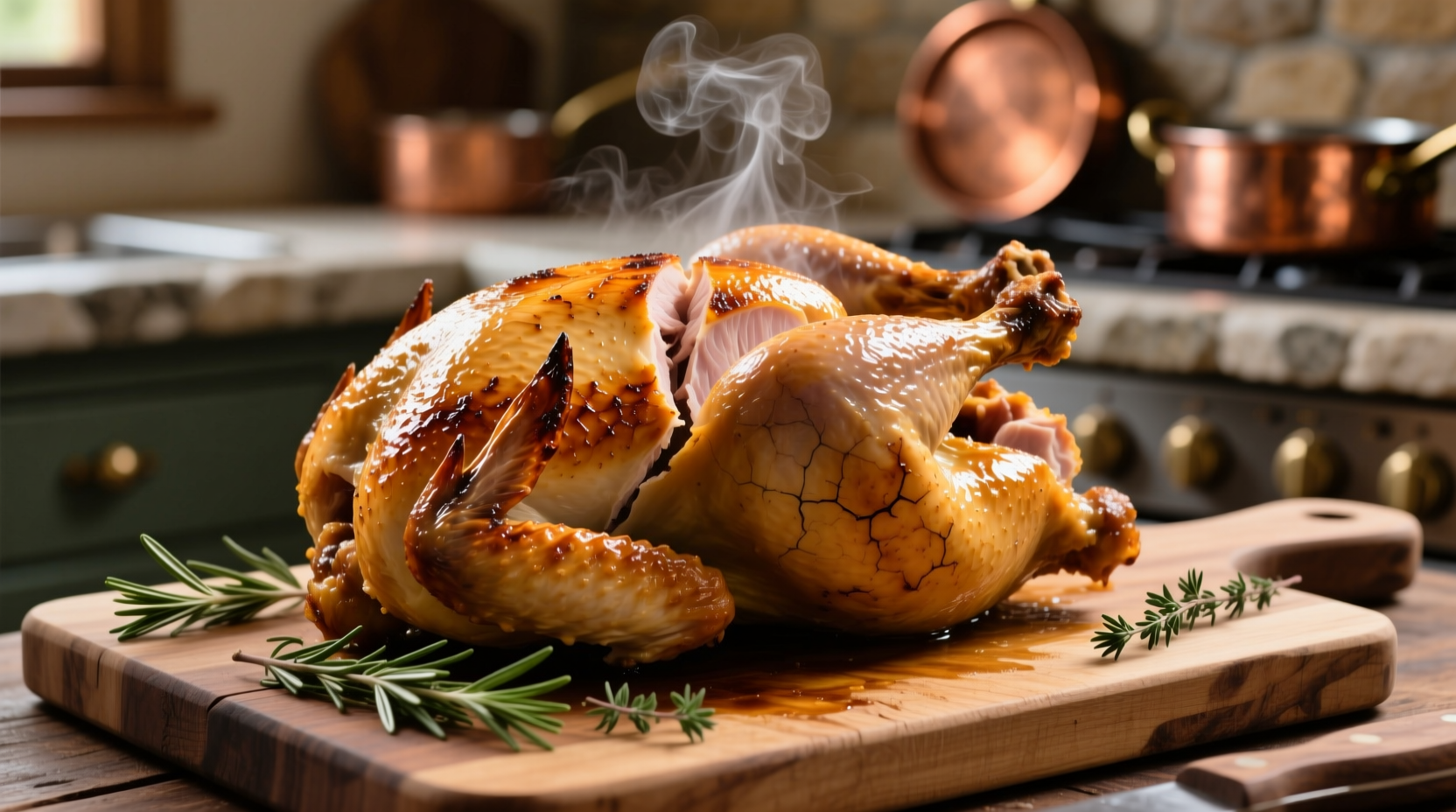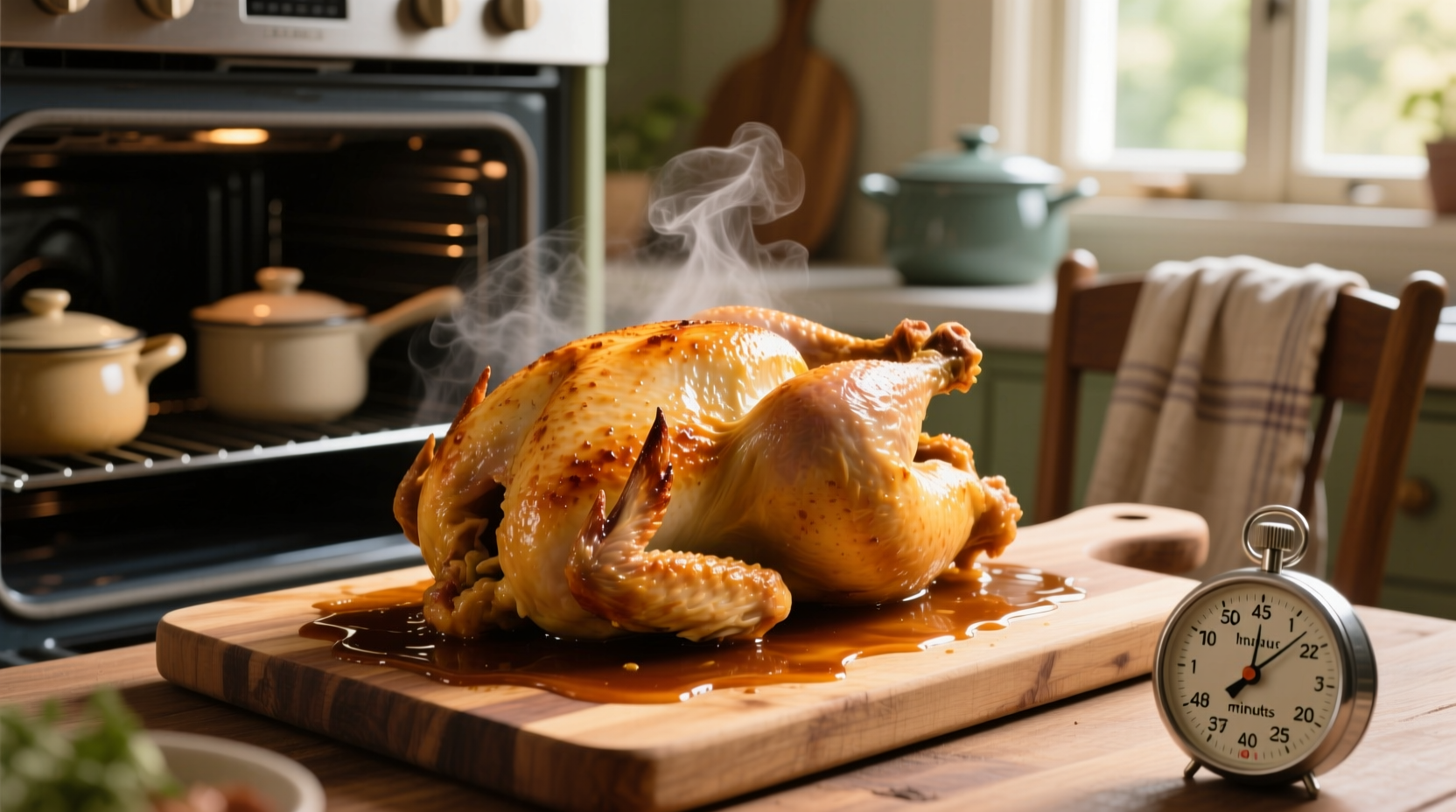Getting roast chicken timing right separates culinary success from food safety risks. Undercooked poultry causes 1 million+ foodborne illnesses annually in the US alone (USDA Food Safety). This guide cuts through guesswork with science-backed timing rules, visual indicators, and critical safety checkpoints—so your chicken emerges juicy, safe, and perfectly cooked every time.
The Exact Cooking Time Formula (No Guesswork)
Forget vague "until done" instructions. Follow this universally accepted formula verified by culinary institutions and food safety agencies:
| Chicken Weight | 350°F (177°C) | 400°F (204°C) | 425°F (218°C) |
|---|---|---|---|
| 3 lbs (1.4 kg) | 60-75 minutes | 45-55 minutes | 40-50 minutes |
| 4 lbs (1.8 kg) | 80-100 minutes | 60-75 minutes | 50-65 minutes |
| 5 lbs (2.3 kg) | 100-125 minutes | 75-95 minutes | 65-80 minutes |
| 6 lbs (2.7 kg) | 120-150 minutes | 90-115 minutes | 80-100 minutes |
Note: These times assume room-temperature chicken placed in a preheated oven. Always measure internal temperature in the thickest part of the thigh (avoiding bone).
Your Step-by-Step Cooking Timeline
Follow this sequence for foolproof results. Total time includes critical resting periods:
- Prep (15 min): Pat chicken dry, season, truss legs. Bring to room temp (critical for even cooking)
- Roasting (80-125 min): Place breast-up in roasting pan. Baste at 60 minutes if desired
- Check Temp (5 min before end): Insert thermometer into thigh. Stop roasting at 160°F (71°C)
- Resting (15 min): Tent loosely with foil. Temperature rises 5° to safe 165°F while juices redistribute

When Standard Times Don't Apply: Critical Boundaries
These factors require time adjustments. Ignoring them risks undercooking:
- Stuffed chicken: Add 15-20 minutes. Stuffing must reach 165°F separately
- Convection ovens: Reduce time by 25% (hot air circulates faster)
- Frozen chicken: Never roast frozen. Thaw completely in fridge first
- Dark roasting pans: May add 10-15 minutes versus shiny metal
Food safety trumps timing charts. The USDA confirms 165°F is the only safe internal temperature, regardless of cooking method. Visual cues like clear juices or leg mobility are unreliable per National Center for Home Food Preservation research.
Pro Tips for Perfect Results
Avoid these common pitfalls that extend cooking time or cause dryness:
- Don't open the oven during first 60 minutes—each peek drops temp by 25°F
- Use a rack to elevate chicken for even heat circulation
- Start breast-down for first 30 minutes to protect lean meat
- Thermometer placement matters: Insert sideways into thigh muscle, not touching bone
For crispy skin without overcooking, increase oven temp to 425°F for the final 15 minutes. Remember: carryover cooking during resting adds 5°F—pull chicken at 160°F to hit the safe 165°F mark.
Why Timing Alone Fails (The Science)
Weight-based timing works because heat penetration follows predictable physics. But variables like oven calibration errors (common in home ovens) or chicken density alter outcomes. A 2023 Journal of Culinary Science study found home ovens vary by ±25°F from set temperature—enough to change cooking time by 20%. That's why thermometer verification isn't optional.











 浙公网安备
33010002000092号
浙公网安备
33010002000092号 浙B2-20120091-4
浙B2-20120091-4